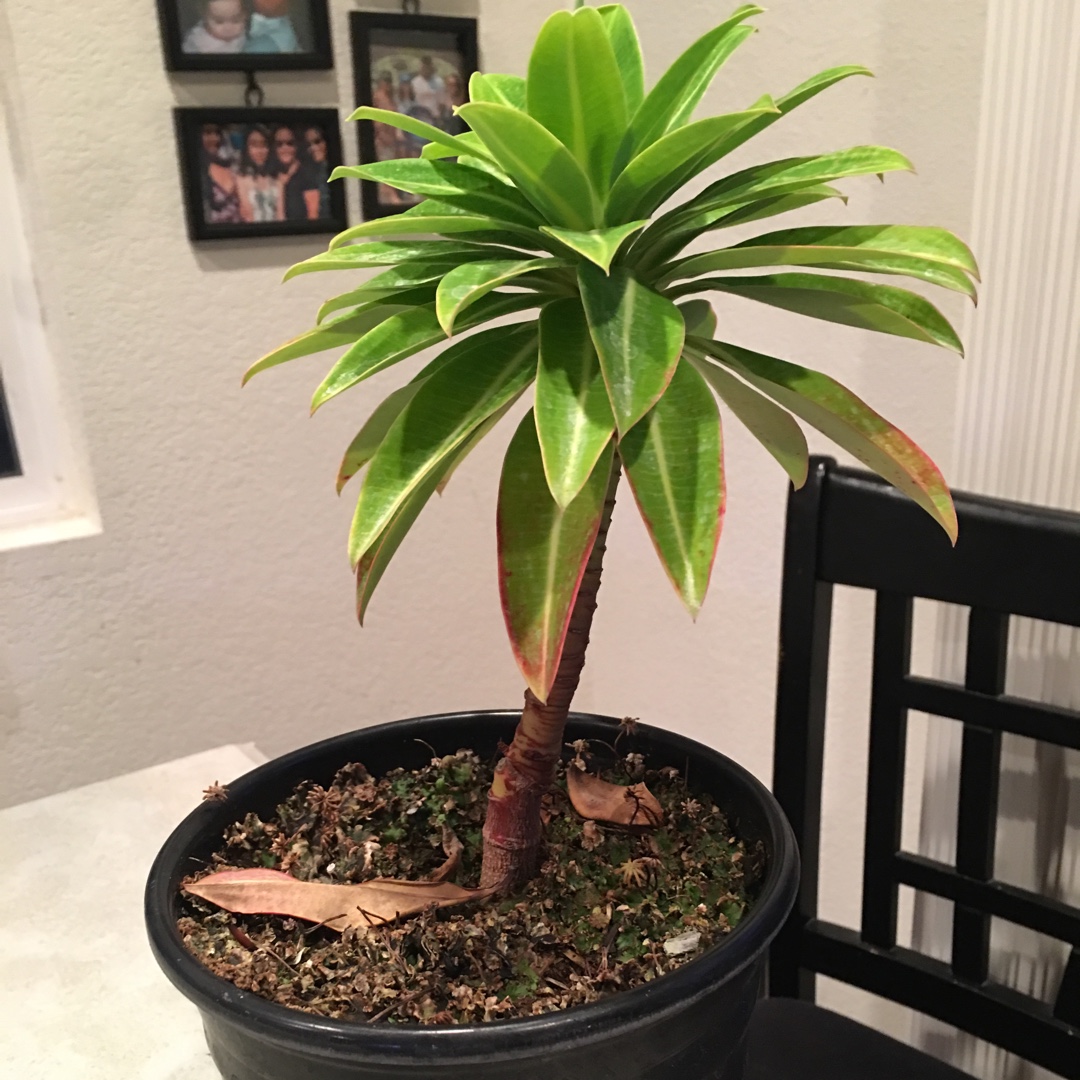
Euphorbia Stygiana
Euphorbia Stygiana
Original:Euphorbia stygiana is an endangered species of perennial evergreen shrub in the Euphorbiaceae family, endemic to several islands of the Azores. It grows to a height of 1.5m / 4.9 ft and spread of 1m / 3.3 ft, with dark green lanceolate leaves and yellow flowers. New:A shade-loving plant that has long-lasting flowers in late spring above rosettes of glossy, dark green leaves. It grows well in areas of dry shade, under trees and in a woodland setting. It is evergreen and suckering and if left unchecked it can become invasive. Euphorbia stygiana is a broad, evergreen shrub. It has narrow, bright green leaves with a pale midrib. In late Spring and early Summer pale green honey-scented flower-heads form, and these are followed by knobbly fruit. In Autumn the lower leaves turn red .
Contributed by @jenncess
-
Full sun to partial shade
-
Very little water
-
Full Frost Hardy: 5F (-15°C)
-
Moist and free draining
Common name
Euphorbia Stygiana
Latin name
Euphorbia Stygiana
type
Evergreens
family
Euphorbiaceae
ph
5.0 - 7.5 Acid - Neutral
Plant & bloom calendar
-
Best time to plant
full grown dimensions
 1.50 M
1.50 M
1.50 M
1.50 M
Euphorbia Stygiana
Original:Euphorbia stygiana is an endangered species of perennial evergreen shrub in the Euphorbiaceae family, endemic to several islands of the Azores. It grows to a height of 1.5m / 4.9 ft and spread of 1m / 3.3 ft, with dark green lanceolate leaves and yellow flowers. New:A shade-loving plant that has long-lasting flowers in late spring above rosettes of glossy, dark green leaves. It grows well in areas of dry shade, under trees and in a woodland setting. It is evergreen and suckering and if left unchecked it can become invasive. Euphorbia stygiana is a broad, evergreen shrub. It has narrow, bright green leaves with a pale midrib. In late Spring and early Summer pale green honey-scented flower-heads form, and these are followed by knobbly fruit. In Autumn the lower leaves turn red .
Planting young plants
From Early Spring TO Early Spring
As a general rule, Spurge requires well-drained soil in full sun. They will tolerate shadier conditions, but none of the family is fussy about soil condition. They even thrive in very poor soils and can tolerate periods of drought.
Propagation
From Early Spring TO Early Spring
Spurge grows quite well from seeds sown indoors in pots. You can propagate Euphorbia more quickly and easily by gathering up the “volunteers” around an established plant. You may also root stem cuttings in a soilless medium, such as peat. Keep them lightly misted and enclose the pot in a bag to keep moisture in. Let the pot breathe once a day for an hour, so the soil does not mold. Once the cutting has rooted, you can pot it in regular soil or plant outdoors in moderate climates. One of the more important growing tips for Euphorbia is to let the stem cutting dry for a few days before planting. This allows the sap to form a callus on the cut end and prevents rotting.








